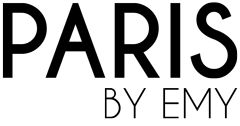|Le Jardin des Tuileries|
Tuileries Garden Paris : The Tuileries Garden is a Parisian fenced park in the 1st arrondissement created in the 16th century, on the site of a tile factory. In French, tile factory is tuilerie. It is bounded by the Louvre Palace to the south-east, the rue de Rivoli to the north-east, the Place de la Concorde to the north-west and the Seine to the south-west. It is the largest and oldest French-style garden in the capital, which once was that of the Tuileries Palace, a former royal and imperial residence, now disappeared. The Tuileries Garden has been listed as a historical monument since 1914.
Tuileries Garden Paris beginning
In the early 1560s, Catherine de Medici (1519 – 1589), widow of King Henry II and queen mother of Charles IX wanted a palace to the west of Paris to replace the old Hôtel des Tournelles, located north of the current Place des Vosges and abandoned since the death of her husband 5 years earlier. She decided to build a vast Italianate palace along the Seine along with gardens, next to the Louvre undergoing through major restoration. She bought buildings and lands in the Faubourg Saint-Honoré. The first stone was laid in May 1564. The buildings of the Faubourg Saint-Honoré bought by the kingdom were tile factories, tuileries.
The architect Philibert Delorme proposed an immense rectangle of buildings that would surround a large courtyard. Although work on the palace came to an halt, landscaping of the garden continued thanks to Bernard de Carnessequi and his team, from Florence, Italy. This Italian style garden was adorned by spectacular folies and surrounded by walls. The Queen’s mother garden was the largest and finest garden of Paris open to the elite uo to the French Revolution.
King Henry IV (1553 – 1610) combined the Louvre palace and the Tuileries palace into a genuine royal precinct. The garden was also resuscitated by Claude Mollet adding trees, flowerbeds, fountains and a large ornamental pool supplied with water from a pump on the pont Neuf built in 1608. Louis XIII commissioned little construction during his reign. When the royal family was not in Paris, the garden was open to the public. Louis XIV, leaving the Louvre for Versailles palace continued to renovate the Tuileries Louvre royal residence. After the death of Louis XIV, the royal family returned to the Louvre Tuilerie palace, ignored for 45 years and gave a new life to the palace and its garden. Louis XV at his majority decided to return to Versailles palace built by his grandfather on June 14, 1722. During the French Revolution in 1789, the royal family was forced to move back to the Tuilerie becoming the center of political life. At the same time, the Louvre palace was inaugurated on August 10th, 1793 as a museum. The royal palace became a national palace, the seat of the new republican government which decided to restore the gardens. On February 19, 1800, Napoleon the new ruler, moved into the Tuileries Palace. In 1870, the retreating communards set fire to the Tuileries. In 1981, François Mitterrand president launched the Grand Louvre Project. In 2005, the Tuileries garden became an official part of the Louvre museum.
For 3 centuries the Tuileries Palace experienced royal splendor, revolutionary agitation, then the arrival of the Empire and finally the Republic.

Lucius Quinctius Cincinnatus by Denis Foyatier (1793-1863)
Tuileries Garden Paris highlights
From the Carrousel Gardens to the Grand Bassin (octogonal pool), from groves to terraces, lets’ have a tour of the Tuileries Garden Paris forming a great open-air museum :
- The cour Napoleon with the pyramid a large glass and metal pyramid by Chinese-American architect I. M. Pei
- The arch of the Carrousel built between 1806 and 1808 to commemorate Napoleon’s military victories
- The layout place du Carrousel facing the pyramid
- The Carrousel gardens with its 21 statues from Aristide Maillol (1861-1944)
- The Terrace adorned by 2 large vases with garlands of lowers and 2 sculptures of Aristide Maillol
- The Grand Carré, open square garden laid out by Le Nôtre in the XVII century with statues
- The Grand Couvert, open square with restaurants, trees, benches, copses, ancient style gateways, statues
- The Feuillants Esplanade a terrace and esplanade along the north side of the Grand Carré
- The Grand Bassin, an octogonal pool leading the the terraces of the Orangerie museum and the jeu de Paume
- Riverside Terrace overlooking the Seine River runs from the Orangerie with a link to Orsay museum
Enjoy a genuine custom made itinerary for your Paris Trip or ask us for a private tour with personal guide, according to your profile and aspirations from 170 Euros. We create tailor-made Paris package.
Emy,


